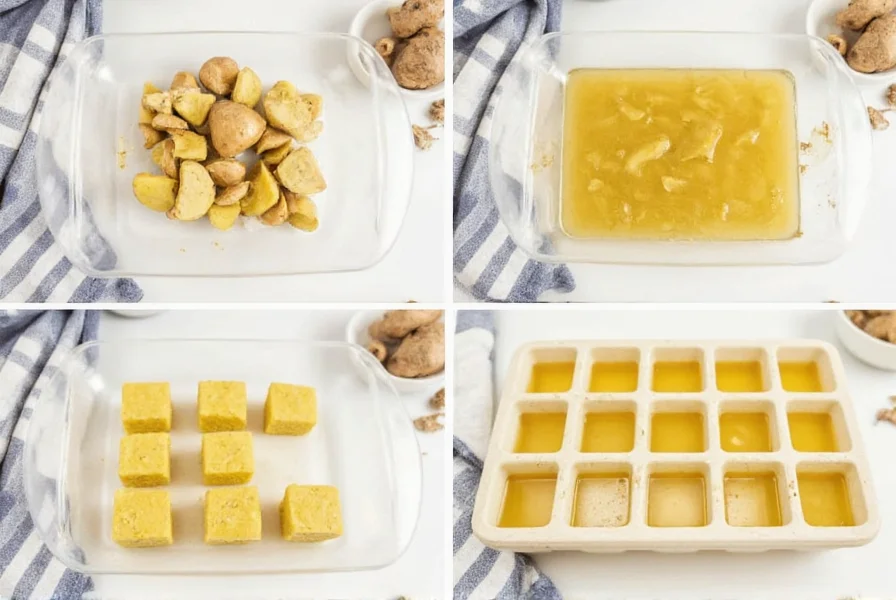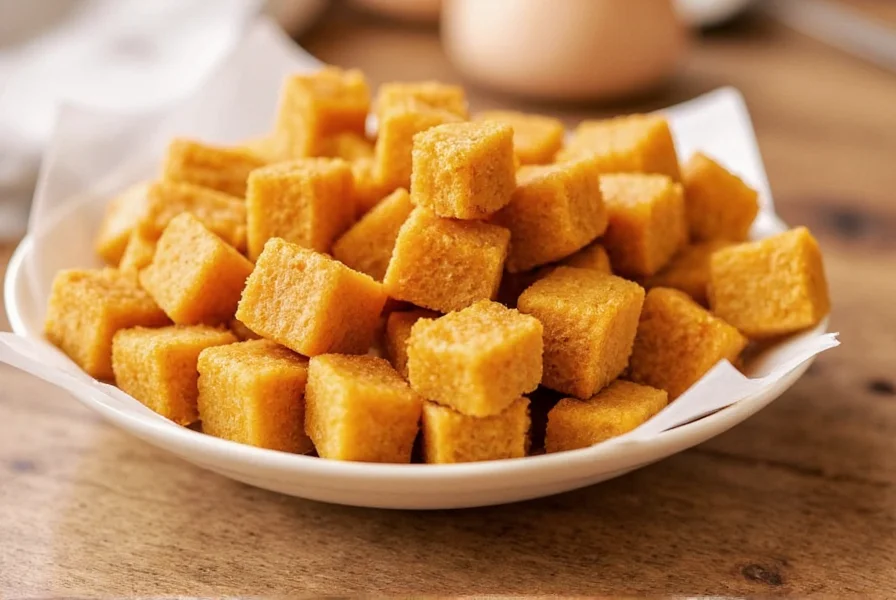Ginger cubes offer a practical solution for home cooks and professional chefs seeking consistent ginger flavor without the mess and waste of handling fresh root. These convenient portions maintain ginger's distinctive spicy-sweet flavor profile while solving common preparation challenges. Unlike powdered ginger which loses volatile compounds, frozen cubes preserve gingerol—the active compound responsible for ginger's characteristic heat and many health benefits.
Understanding Ginger Cube Composition
Ginger cubes consist of pure ginger root with no additives, flash-frozen immediately after cutting to preserve freshness. The freezing process locks in flavor compounds that would otherwise degrade within days when stored as fresh ginger. Most commercial ginger cubes measure approximately 12-15mm per side, providing standardized portions ideal for precise recipe measurements.
| Ginger Form | Shelf Life | Preparation Time | Flavor Intensity |
|---|---|---|---|
| Fresh Ginger Root | 2-3 weeks refrigerated | 5-7 minutes | ★★★★★ |
| Ginger Cubes (frozen) | 6-12 months | 10-15 seconds | ★★★★☆ |
| Ginger Powder | 2-3 years | Instant | ★★★☆☆ |
| Ginger Paste | 1 month refrigerated | 30 seconds | ★★★★☆ |
Practical Applications in Culinary Settings
Professional kitchens increasingly adopt ginger cubes for recipe consistency across multiple batches. When preparing ginger tea, simply add 2-3 frozen cubes directly to boiling water—no thawing required. For stir-fries, chefs appreciate how the cubes quickly release flavor when tossed into hot oil. The standardized size ensures even distribution in baked goods like ginger cookies or cakes, eliminating the risk of large ginger chunks creating uneven flavor pockets.
Asian cuisine enthusiasts find ginger cubes particularly valuable for making authentic broths and sauces where ginger's presence should be felt but not seen. The cubes dissolve completely during simmering, infusing dishes with ginger essence without leaving fibrous remnants. This characteristic makes them ideal for smooth soups, pureed sauces, and clear broths where texture matters.

Storage and Shelf Life Considerations
Properly stored ginger cubes maintain quality for 6-12 months in the freezer. Transfer commercial packages to airtight containers immediately after opening to prevent freezer burn. For homemade ginger cubes, spread cut pieces on a parchment-lined tray before freezing, then transfer to containers once solid—a technique preventing clumping. Never refreeze thawed ginger cubes, as this degrades both texture and flavor compounds.
When substituting ginger cubes for fresh ginger in recipes, use a 1:1 volume ratio. Three standard ginger cubes (approximately 15g) equal one tablespoon of freshly grated ginger. For recipes requiring ginger juice, place frozen cubes in a fine mesh strainer over a bowl—thawing releases pure ginger liquid without fibrous pulp.
Creating Ginger Cubes at Home
Homemade ginger cubes offer customization for specific culinary needs. Start with firm, smooth ginger root—avoiding wrinkled or soft specimens. Peel using a spoon's edge to minimize waste, then cut into uniform 1/2-inch pieces. For concentrated flavor, blend peeled ginger with minimal water and freeze the puree in ice cube trays. For traditional cubes, simply freeze cut pieces on a tray before transferring to storage containers.
Consider adding complementary ingredients to custom ginger cubes: lemon zest cubes for tea preparation, or ginger-garlic combinations for Asian cooking. These specialized cubes streamline complex recipe preparation while ensuring consistent flavor profiles across multiple cooking sessions.

Comparing Ginger Forms for Specific Applications
Understanding when to choose ginger cubes over other forms elevates culinary results. For quick weeknight meals, frozen cubes eliminate preparation time while delivering nearly fresh flavor. When making ginger shots or health tonics, cubes provide measured portions without the stringy texture of freshly grated ginger. In contrast, fresh ginger remains preferable for garnishes or dishes where visual presentation matters.
Chefs note that ginger cubes perform exceptionally well in slow-cooked dishes where extended cooking time allows complete integration of flavor. For raw applications like salads or ceviche, fresh ginger's brighter top notes may be preferable. The moisture content of frozen cubes makes them ideal for beverages where they function as both flavoring and cooling element.
Maximizing Flavor from Ginger Cubes
For optimal flavor release, add frozen ginger cubes directly to hot liquids or oils—never thaw first. The temperature shock helps break down cell walls, releasing more gingerol compounds. In baking applications, pulse frozen cubes in a food processor until fine before incorporating into batters. When making marinades, crush cubes slightly with the back of a spoon to increase surface area and accelerate flavor infusion.
Experiment with ginger cube quantities based on desired intensity: 1-2 cubes for subtle background notes in rice dishes, 3-4 cubes for pronounced flavor in curries, and 5+ cubes for bold applications like ginger beer or spiced cocktails. Remember that frozen ginger's flavor develops more gradually than fresh, so allow adequate cooking time for full flavor integration.
Frequently Asked Questions
Can I use ginger cubes instead of fresh ginger in recipes?
Yes, ginger cubes substitute perfectly for fresh ginger at a 1:1 volume ratio. Three standard ginger cubes (about 15g) equal one tablespoon of freshly grated ginger. Add frozen cubes directly to hot preparations without thawing for best flavor release.
How long do ginger cubes last in the freezer?
Properly stored in airtight containers, ginger cubes maintain optimal quality for 6-12 months in the freezer. Commercially packaged cubes typically have a 12-month shelf life when unopened, while homemade versions last 6-8 months before noticeable flavor degradation occurs.
Do ginger cubes lose nutritional value when frozen?
Freezing preserves ginger's bioactive compounds better than most storage methods. Ginger cubes retain approximately 95% of their gingerol content compared to fresh ginger stored for just 3 days at room temperature. The flash-freezing process used for commercial cubes locks in nutrients immediately after preparation.
How do I make ginger tea with frozen ginger cubes?
Add 2-3 frozen ginger cubes directly to 8-12 ounces of boiling water. Steep for 5-7 minutes for medium strength, or 10-15 minutes for stronger tea. The cubes will dissolve completely during steeping. Enhance with lemon or honey to taste. For iced ginger tea, use 4-5 cubes per serving and pour over ice after steeping.











 浙公网安备
33010002000092号
浙公网安备
33010002000092号 浙B2-20120091-4
浙B2-20120091-4